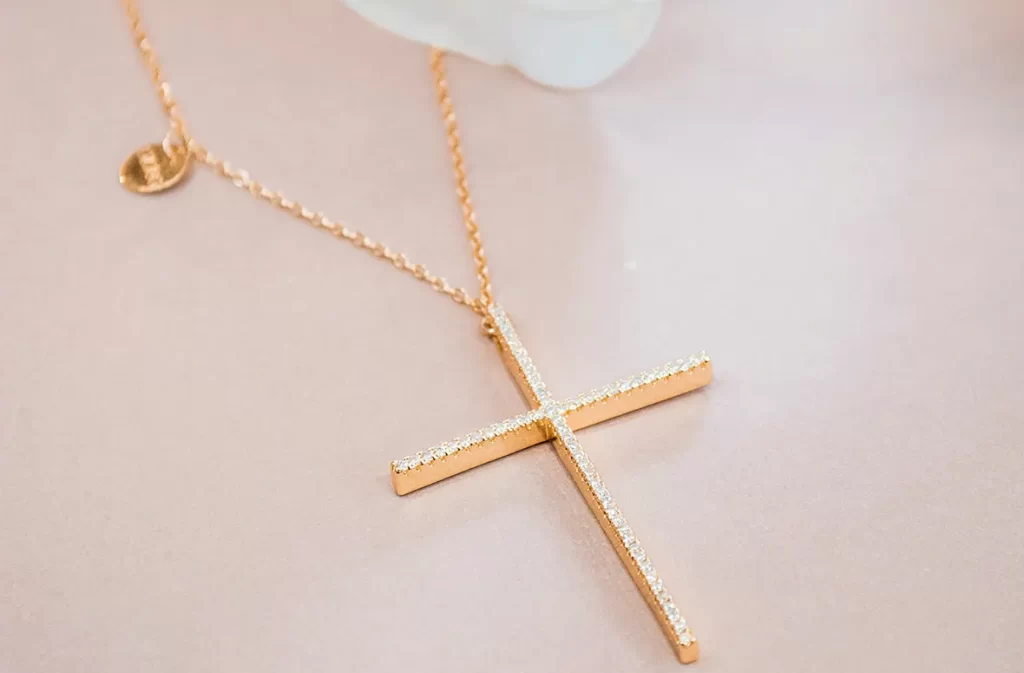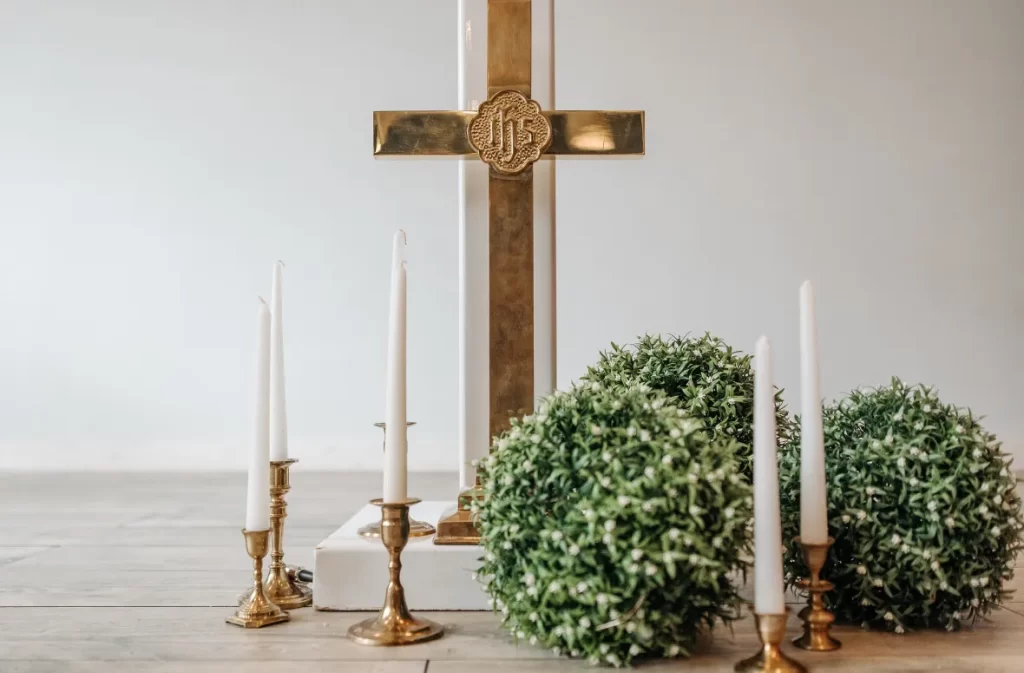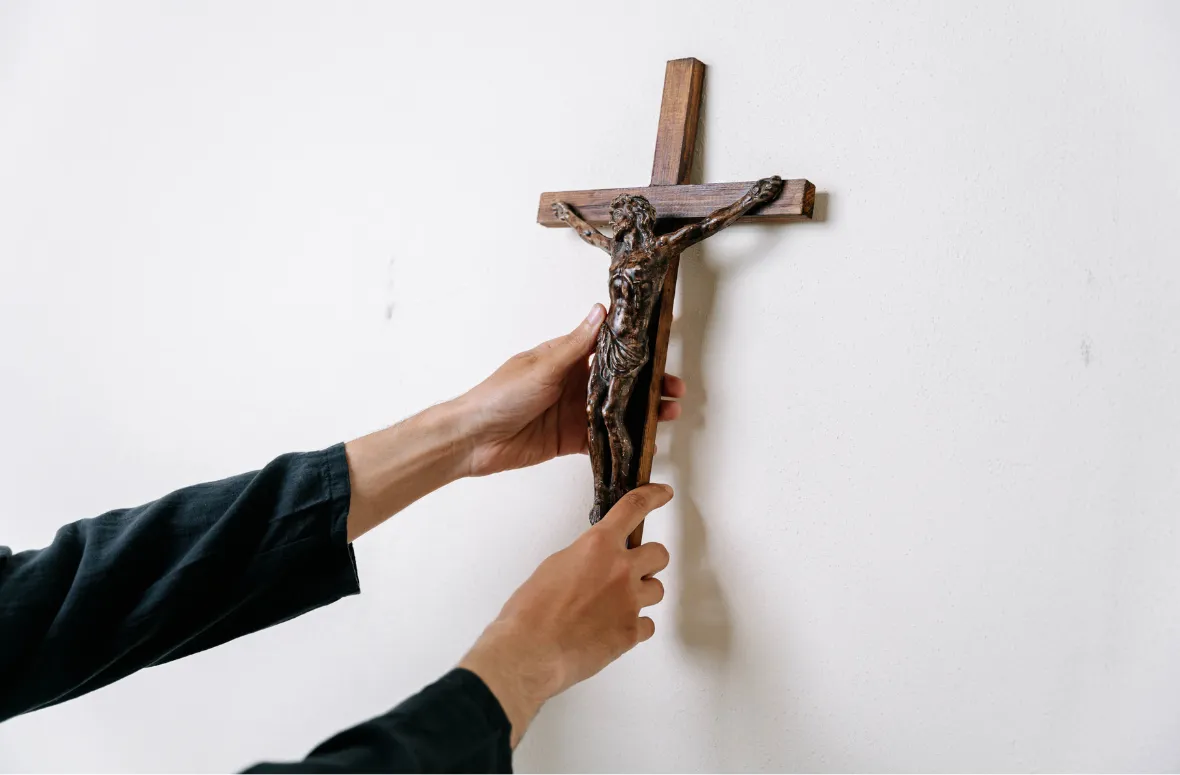Table of Contents
The Upside-Down Cross: A Symbol with a Complex History
The upside-down cross is a symbol. Its meaning has changed over time. Its meaning dances with the context in which it resides. The inverted cross has a rich history. It began in Christianity. Now, it appears in fashion, horror films, and counterculture. This article will explore the upside-down cross. It has religious roots and various meanings today.
The Origins: Saint Peter and the Crucifixion
The upside-down cross is linked to a revered Christian figure: Saint Peter, one of Jesus’ twelve apostles. According to Christian tradition, Saint Peter was crucified around 64 AD during the reign of Emperor Nero.
Peter, who was a key leader in the early Christian church, reportedly requested to be crucified upside down. Why? Deeming himself unworthy, he refused to mirror Christ’s death. His Savior’s sacrifice demanded a different end. This act of humility, recognizing the sanctity of Christ’s sacrifice, became a powerful symbol in Christianity.
Saint Peter’s upside-down crucifixion shows his deep faith and humility. It also testifies to the sacrifices early Christians made for their beliefs. Over time, the upside-down cross became known as the Cross of Saint Peter, symbolizing Peter’s profound devotion.
The symbol’s religious significance

A sparkling gold cross necklace is on display.
The Bible does not mention the upside-down cross. However, a tradition about Saint Peter’s death has made it a Christian symbol of humility and faith. It symbolizes the ultimate sacrifice of a leader who considered himself unworthy of sharing the same fate as Jesus. The Roman Catholic Church, especially regarding the Pope, uses the cross of Saint Peter. It symbolizes the papacy’s authority, believed to come from Saint Peter.
Some see it as sacrilegious. But, the upside-down cross is sacred in some faiths. It symbolizes spiritual leadership and divine power. The Pope may wear vestments with the symbol during Masses and processions to show he is Saint Peter’s spiritual successor.
Also Read: The Seven Deadly Sins: A Deep Dive into Sin and Morality
Modern Misconceptions and New Meanings
As the centuries have passed, the inverted cross has taken on new meanings—many of them far removed from its original significance.
- Anti-Christian Symbolism: Today, the upside-down cross is a symbol of rebellion against Christianity in pop culture and some subcultures.. Groups and individuals use it to challenge Christian teachings and oppose organized religion. This association makes the symbol controversial, straying far from its simple Christian roots.
- Satanism and the Occult: The inverted cross has also found its place within the realm of Satanism and occultism. It turns the Christian cross upside down. This symbolizes a rejection of Christian beliefs and an embrace of opposing ideologies. Media portrayals and certain subcultures have fueled this interpretation. As a result, they have contributed to the perception of the upside-down cross as a dark and ominous symbol.
The Upside-Down Cross in Popular Culture and Horror

Snowy graveyard with upright wooden crosses.
Horror films’ use of the upside-down cross is a dramatic, modern twist on it. In films like The Exorcist (1973), the inverted cross often means evil or demonic possession. It also suggests the corruption of sacred symbols. It symbolizes a turn away from Christian values, linking it to malevolent forces.
The symbol still appears in horror franchises like The Conjuring. It enhances the dread and foreboding atmosphere. In these films, the upside-down cross serves as a visual cue, signaling the presence of supernatural or demonic entities. Its role in such media has cemented the cross’s association with evil, spiritual conflict, and corruption.
Read Also: The Future of Mathematics Education: Innovative Approaches and Methods
The Inverted Cross in Modern Fashion
The upside-down cross has religious and supernatural meanings. It is also popular in modern fashion, especially in alternative and countercultural circles. Rebellion’s emblem: a statement of uniqueness. This icon defies norms, embodying the spirit of those who refuse to blend in.
- Gothic and Punk Fashion: Goth, punk, and metal subcultures have adopted the inverted cross to express identity and defiance. Likewise, rock bands like Marilyn Manson and Black Sabbath use the symbol, linking it to their music and beliefs. In these contexts, the symbol reflects a rejection of societal norms and an embrace of darker, more alternative lifestyles.
- Clothing and Accessories: Today, the upside-down cross is trendy in clothing and jewelry. People in alternative or rebellious subcultures often wear it. They sport T-shirts, hoodies, and jackets with inverted crosses. Jewelry designers also embrace this symbol. They create necklaces, rings, and earrings, offering everything from simple to intricate designs.
Beyond mere style, these pieces embody personal expression and liberation. They speak volumes, silently declaring one’s unique identity and unfettered spirit. They also confront customary societal and religious norms. In this sense, the inverted cross has been reinterpreted as a symbol of personal expression rather than a sign of evil or sacrilege.
Tattoos: A Permanent Statement

A decorative golden cross with candles.
Another modern application of the upside-down cross is in tattoos. For many people, getting an inverted cross tattoo is a powerful way to express their personal identity and beliefs. Whether it’s a bold design on the forearm or a subtle placement on the ankle, the tattoo serves as a permanent declaration of individuality. In some cases, it can symbolize a rejection of Christianity or a desire to break free from conventional religious structures.
A Symbol of Contradictions
The upside-down cross is a symbol with a rich history. It has religious meaning and modern reboots. The inverted cross has changed greatly. It began in Christianity, where it symbolized Saint Peter’s humility and sacrifice. Now, it is a controversial and rebellious icon in fashion, media, and subcultures.
Also Read: How to Maximize Your CPD Training Experience for Better Results
Its meaning today varies widely depending on context. To some, it is a symbol of faith and humility, a tribute to a beloved apostle. To others, it is an expression of rebellion or a sign of opposition to religious norms. Its appearances in horror films and alternative fashion only add layers to its complex cultural narrative.
The history and evolving meanings of the upside-down cross allow us to appreciate the many ways symbols can shift and adapt over time. The upside-down cross, a sacred emblem or a joke, urges us to question the symbols around us and their role in shaping our identities.ng our identities.




